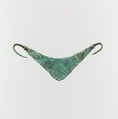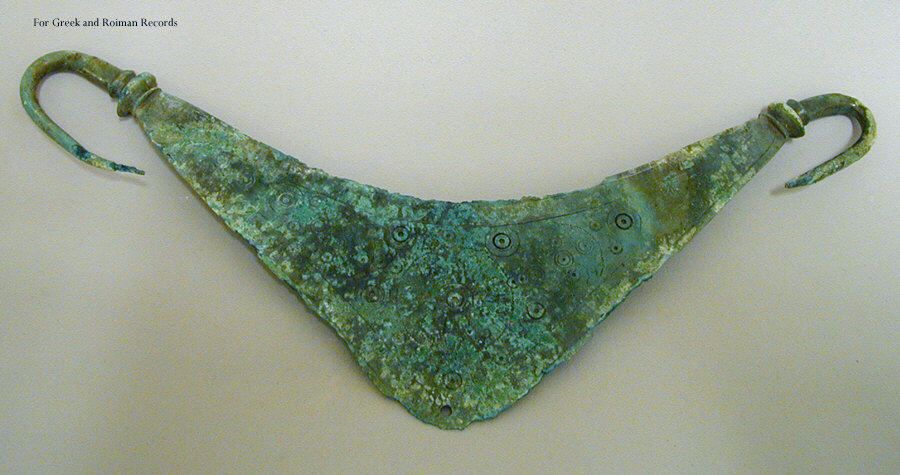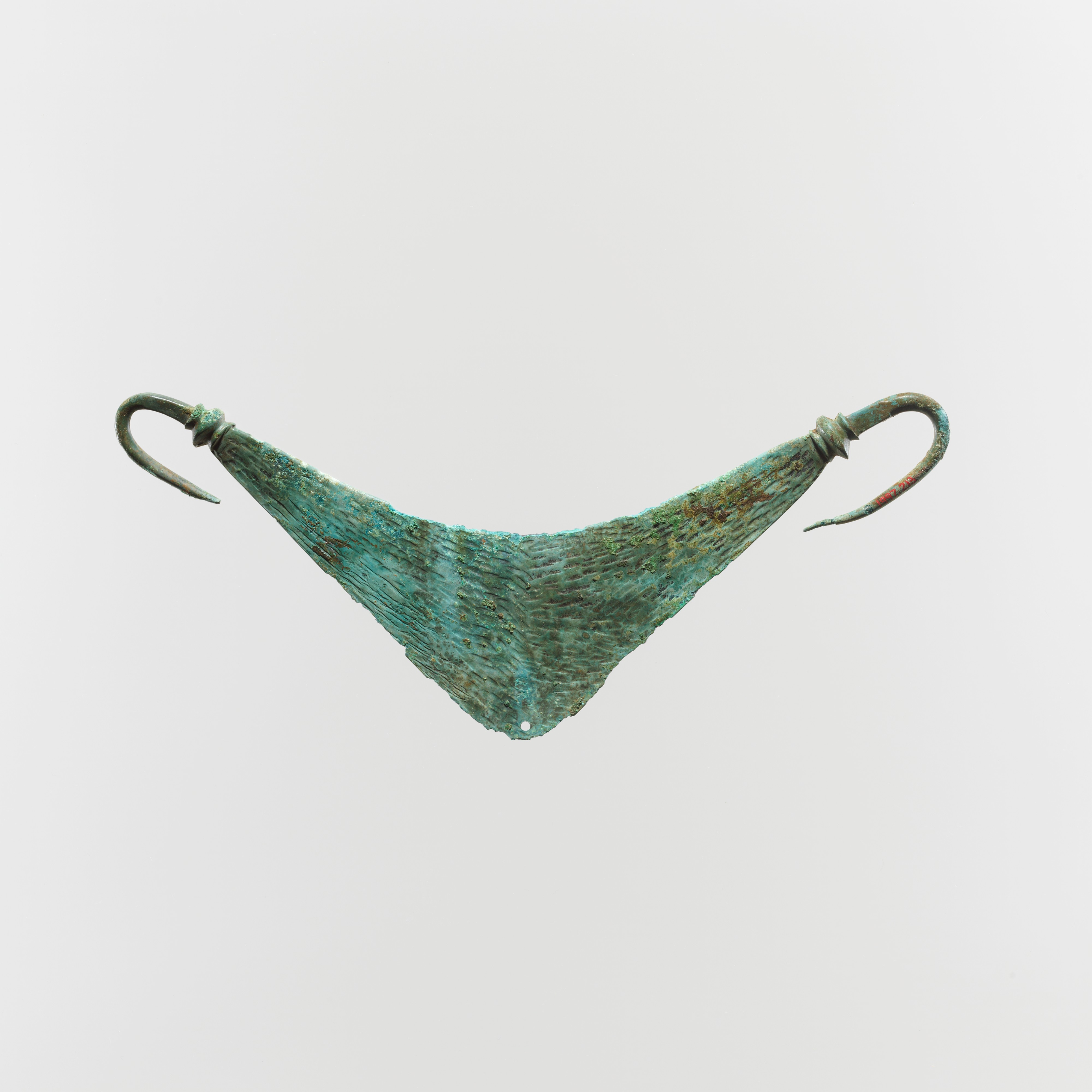Bronze belt clasp
This type of personal ornament is characteristic of northern Greece, particularly Western Macedonia and Thessaly. The extraordinary delicacy and technical mastery in the execution of the triangles and concentric circles are especially noteworthy. A similar object was discovered in a woman’s tomb at Kozani (modern Greek province of Macedonia), placed on the body’s pelvis, indicating its function as belt clasp or hanger.
The belt clasp belongs to the group of the so-called Macedonian bronzes, a wide range of bronze ornaments made in the northwest Aegean and south-central Balkans (late 8th-early 5th c. BCE), and mostly found in elite female graves and in Greek sanctuaries. Though an autonomous stylistic group, these objects present strong artistic connections with the neighboring Hallstatt culture of central Europe and were influenced by the Greek presence in the south (notably in Thessaly, and at Corinth).
Due to rights restrictions, this image cannot be enlarged, viewed at full screen, or downloaded.
This artwork is meant to be viewed from right to left. Scroll left to view more.




